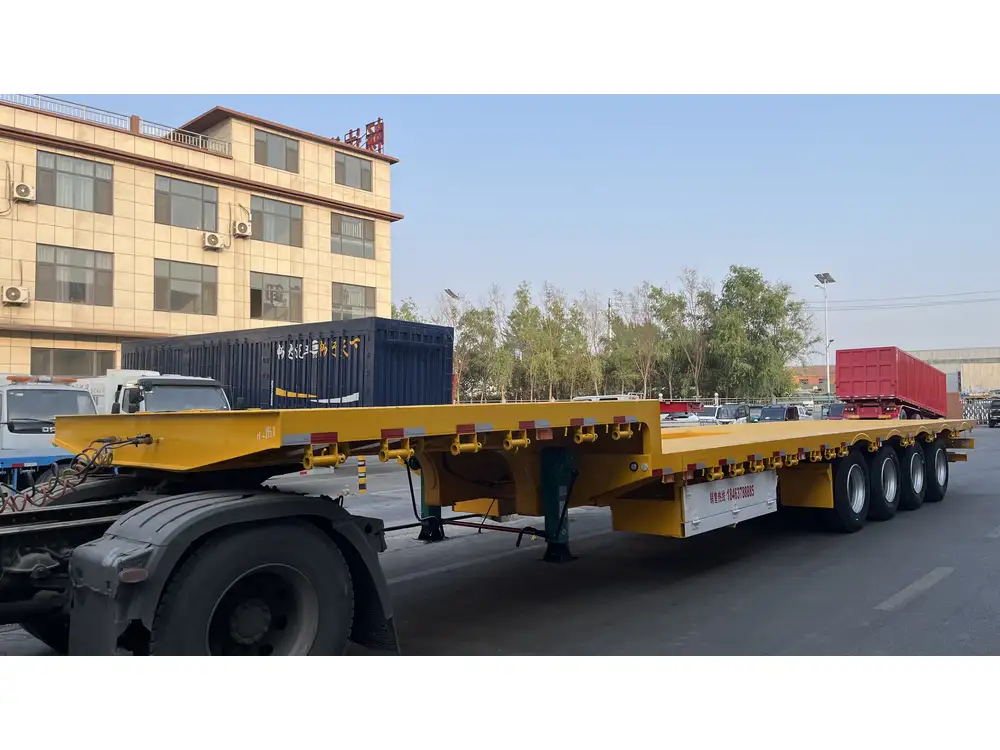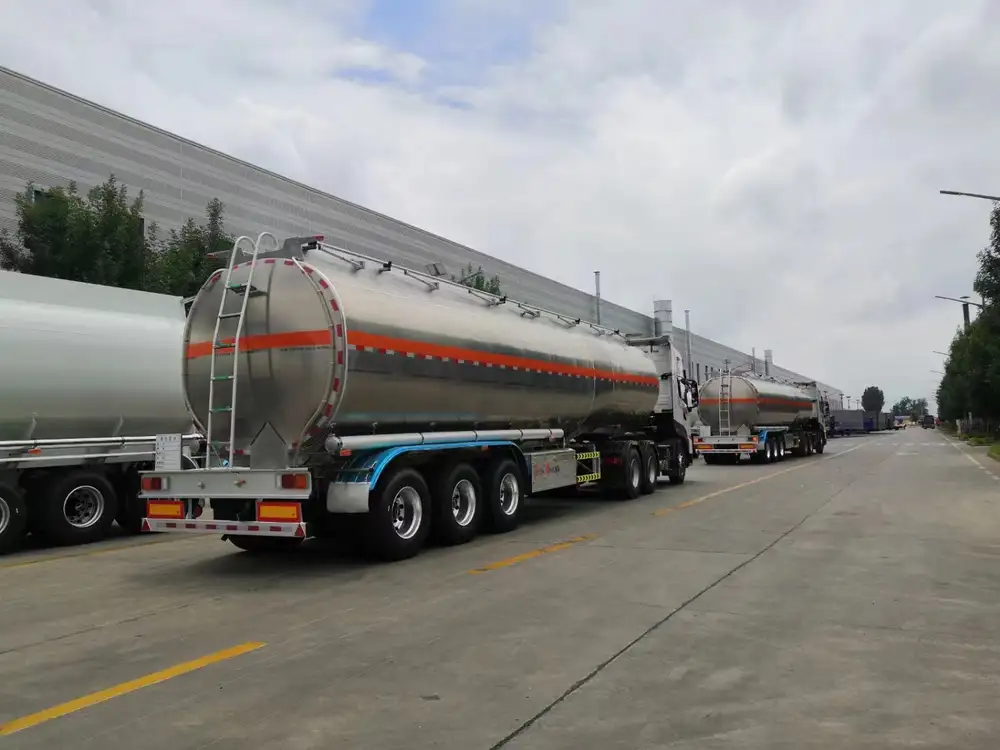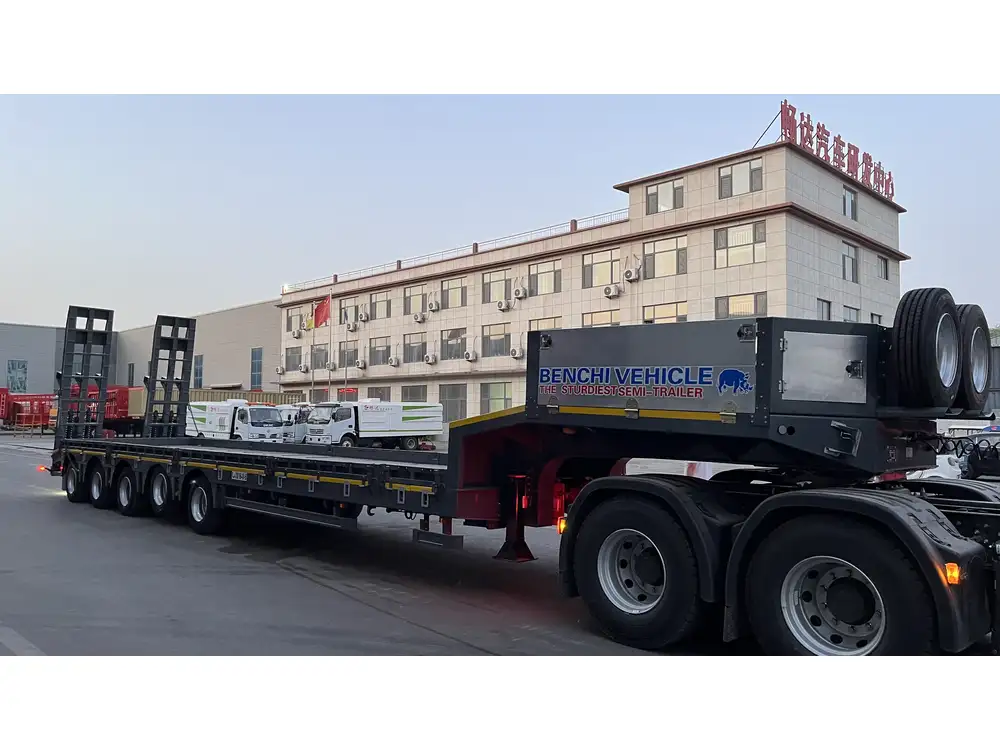End dump trailers are an essential piece of equipment in the construction, mining, and landscaping industries. They provide an efficient means for transporting and unloading materials such as gravel, sand, asphalt, and other loose materials. If you’re new to using an end dump trailer or just need a refresher, understanding the functionality, operation procedures, and safety measures associated with this type of trailer can significantly enhance your productivity and reduce the risk of accidents.
Understanding End Dump Trailers
What is an End Dump Trailer?
An end dump trailer is a type of hydraulic dump trailer that can unload the cargo from the rear end of the trailer. The design features a hinged body that can elevate to allow the load to slide out gravity-fed. This distinct unloading method makes it advantageous for various applications:
| Feature | End Dump Trailer | Other Types of Trailers |
|---|---|---|
| Loading Style | Rear-end dump | Side or bottom dump |
| Best Used For | Loose materials like soil, gravel, asphalt | Bulk materials like grains |
| Unloading Speed | Fast | Variable |

Benefits of Using an End Dump Trailer
- Faster Unloading: The ability to dump materials from the rear allows for quicker unloading compared to other trailer types.
- Reduced Manual Labor: Operating an end dump trailer minimizes the need for manual unloading, which can save on labor costs.
- Versatile Applications: Ideal for construction sites, road maintenance, and even landscaping projects.
Preparing to Use an End Dump Trailer
Pre-Operational Inspection
Before operating an end dump trailer, conducting a thorough pre-operational inspection ensures safety and efficiency. Here’s a checklist of essential components to examine:
| Component | Inspection Task |
|---|---|
| Hitch and Coupling | Ensure proper connection to the towing vehicle |
| Brakes | Test for functionality and wear |
| Hydraulic System | Check hoses for leaks and system responsiveness |
| Tires | Inspect for proper inflation and tread wear |
| Lighting | Ensure all lights (brake, turn signals) work |

Choosing the Right Vehicle
Selecting an appropriate towing vehicle is crucial for the secure and effective operation of an end dump trailer. Factors to consider include:
- Weight Capacity: Ensure that your towing vehicle can manage the gross combined weight (trailer + load).
- Engine Power: The vehicle should have enough power to handle steep inclines.
- Transmission Type: Automatic transmissions can simplify operation, but manual transmissions may offer better control on hilly terrain.
Operating the End Dump Trailer
Hooking Up the Trailer
Once the pre-inspection is complete and you’ve verified your towing vehicle’s suitability, the next step is to properly hook up the trailer:
- Position the Vehicles: Align the end dump trailer with the towing vehicle.
- Couple the Hitch: Securely attach the trailer hitch to the towing vehicle.
- Connect the Wiring Harness: Ensure that the electrical connections for signals and brakes are secure.

Loading the Trailer
End dump trailers are typically loaded using heavy machinery, such as skid steers or front-end loaders. Here’s how to safely load the trailer:
- Approach Gradually: Ensure that the machinery approaches at a slow speed to prevent shifting of the load.
- Center the Load: Load materials in the center of the trailer to maintain proper balance and towing stability.
- Avoid Overloading: Be aware of the weight capacity and never exceed the recommended limits.
Unloading Procedures
Unloading the trailer is one of its most advantageous features. Follow these steps to unload safely:
- Choose a Safe Area: Park on level ground and ensure that the unloading area is clear of personnel and obstacles.
- Raise the Trailer: Activate the hydraulic system to elevate the trailer body. Be aware of the angle and that the trailer is stable before releasing the load.
- Dump the Load: Once elevated, allow materials to slide out.
- Return the Trailer: Lower the trailer back to its original position before moving again.
| Unloading Steps | Safety Considerations |
|---|---|
| Choose Safe Areas | Ensure no bystanders are present while unloading |
| Stabilize the Trailer | Ensure it is on firm ground before dumping |
| Monitor the Load | Watch for sudden shifts in balance |
Safety Considerations

Personal Protective Equipment (PPE)
Always wear appropriate PPE while operating end dump trailers, including:
- Hard Hats: Protects against falling objects.
- Safety Glasses: Prevents eye injuries from dust or debris.
- Gloves: Essential for grip and hand protection.
- High-Visibility Vests: Ensures operators are visible to machinery operators and other workers.
Safe Operating Practices
Adhering to safe operating practices can minimize the risk of accidents:
- Avoid Overturning: Never exceed the manufacturer’s recommended incline when raising the trailer.
- Limit Neighboring Traffic: Establish barriers or warning signs during loading and unloading.
- Regularly Train Operators: Continuous training on proper techniques and safety can reduce accidents.
Troubleshooting Common Issues

Hydraulic Problems
Hydraulic issues may arise during operation or unloading. Common symptoms include:
- Slow Raising or Lowering: Might indicate a leak or low fluid levels.
- Unstable Lift: Check for hydraulic fluid contamination or damaged hoses.
Tire and Brake Concerns
Tire blowouts and inadequate braking can lead to hazardous situations:
- Tire Wear: Inspect for uneven wear and replace as necessary.
- Brake Testing: Regularly check brake performance before every trip.
| Issue | Solution |
|---|---|
| Hoses Leaking | Replace damaged hoses promptly |
| Brakes Not Engaging | Check air pressure and fluid level |
Conclusion
Mastering the operation of an end dump trailer not only enhances efficiency in unloading processes, but it also contributes significantly to job site safety. By understanding how to properly prepare, operate, and troubleshoot issues, you can optimize productivity and protect yourself and your crew from accidents.
Incorporating thorough inspections, emphasizing safety practices, and adhering to operational guidelines will yield benefits for both the manufacturing sector and any construction endeavor utilizing end dump trailers. Equip yourself with knowledge, engage in regular training, and prioritize safety to ensure a smooth flow of operations.



